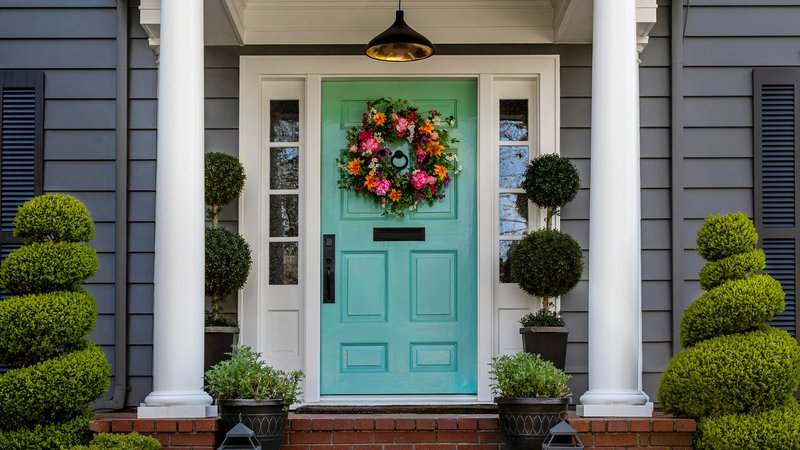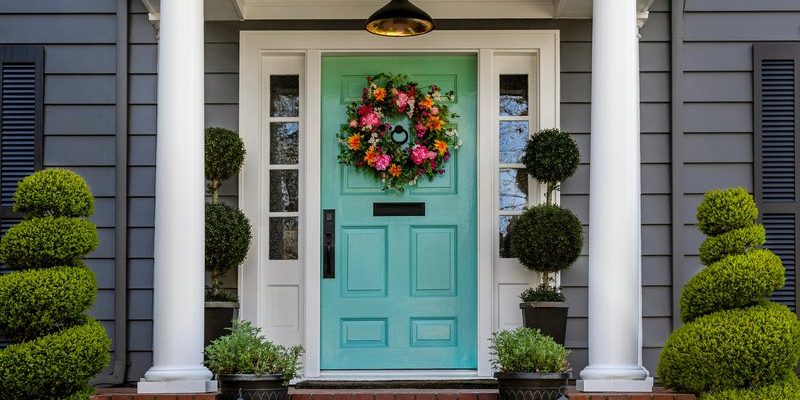
It’s a bit like leaving your favorite bike outside all season. No matter how sturdy it looked at first, that constant mix of moisture and air starts to eat away at the surface, making it look old before its time. But when it comes to your door hardware, it’s not just about looks—it can affect the way your remote keyless entry works, cause sticking, or even lead to bigger maintenance headaches. Let’s get into what’s really happening and what you can do about it.
What Causes Exterior Door Hardware to Lose Color?
Here’s the thing: your door hardware is out there battling the weather day and night. Humidity is a sneaky culprit because it’s not as dramatic as rain, but it’s always working away in the background. The main players here are *oxidation*, *corrosion*, and *finish breakdown*.
When the air is humid, it’s packed with microscopic water droplets. These droplets settle on metal surfaces, and over time, start a chemical reaction. This is called oxidation, and it’s especially common with metals like brass, bronze, and even stainless steel. Some hardware has a protective finish or coating, but humidity will eventually find a way in, especially if there are scratches or chips from keys, rings, or just daily use.
Color loss can show up as:
- Fading or dulling (the surface looks flat or chalky instead of shiny)
- Peeling or flaking (the coating starts coming off in spots)
- Streaking or spotting (uneven discoloration, sometimes green or white)
Hardware brands like Kwikset or Schlage may boast weather resistance, but no finish is completely immune if you live somewhere like Florida or the Pacific Northwest, where it’s sticky for months on end.
How Humidity Attacks Door Hardware Finishes
Let me explain what’s actually happening on the surface. Most exterior door hardware has a two-layer defense: the base metal (like zinc, brass, or steel), and a clear or colored *protective finish* on top. Some pricier brands add a special lacquer, powder coating, or PVD (physical vapor deposition) for extra durability.
Here’s where humidity comes in. When water molecules in the air settle on your hardware, they can:
- Seep through tiny cracks in the finish (especially if it’s scratched or worn)
- React with the underlying metal, causing corrosion or tarnish
- Break down the finish itself, making it brittle or cloudy
If your hardware’s finish begins to wear—maybe from turning the knob with wet hands, slamming the door with keys, or sun exposure—the door becomes even more vulnerable. Once the seal is compromised, humidity can sneak in and start wrecking the color beneath.
Tip: If you spot areas where the color is fading, that’s the finish breaking down. It means it’s time to do some remote troubleshooting before things get worse.
Why Some Metals Lose Color Faster Than Others
Ever wonder why that cheap off-brand knob went spotty, while your neighbor’s expensive Schlage or Yale set still looks decent? Not all metals are created equal when it comes to fighting humidity.
Brass and bronze often develop a greenish patina (think Statue of Liberty vibes) as they react with water and air. Some people like this aged look, but if you paid for a shiny gold finish, it can be disappointing.
Stainless steel is better at resisting corrosion, but “stainless” doesn’t mean stain-proof. If the finish wears down or the grade is low, it’ll get blotchy or even show rusty spots.
Zinc or aluminum are cheap and lightweight, but their finishes don’t last as long in wet climates. You’ll often see these losing their color or looking powdery after a year or two.
Brand matters too. Major brands like Kwikset, Schlage, and Baldwin use better coatings and higher-quality alloys, so their hardware tends to hold up longer. But even with the best brands, poor installation, salt in the air, or just bad luck with the local weather can speed up fading and discoloration.
Environmental Factors That Make Color Loss Worse
You might be wondering, “Is it just humidity, or are there other culprits at work?” The truth is, humidity is just one part of the puzzle. Several environmental factors can work together to speed up how fast your door hardware loses color.
- Sunlight: UV rays can break down protective coatings, making it easier for humidity to attack.
- Salt air: If you live near the ocean, salty mist can act like sandpaper on your hardware, wearing it down fast.
- Acid rain or pollution: Urban areas can have more chemicals in the rain, which makes finishes deteriorate quicker.
- Frequent touch and use: Every time you turn the handle or punch in a code on your smart lock keypad, you wear down the finish a little more.
So, maybe your neighbor’s hardware holds up better because their porch faces north or there’s an overhang to block the rain. Or maybe the entry system isn’t used as much, so the finish stays intact for longer.
How to Slow Down Color Fading on Exterior Hardware
Honestly, there’s no magic fix that makes your hardware immune to humidity, but you can make a big difference with a few simple habits. Think of this as basic troubleshooting for your door’s longevity.
- Wipe hardware regularly with a soft, dry cloth—especially after wet weather or high humidity days.
- Apply a thin coat of car wax or silicone-based lubricant every few months to add an extra layer of protection. Just make sure it’s safe for metals and doesn’t gum up the moving parts or electronic code remotes.
- Keep an eye on chips or scratches. If you spot damage, touch up with matching paint or clear lacquer before it spreads.
- Avoid harsh cleaners like bleach, ammonia, or anything abrasive. These eat away at the protective finish and make fading happen faster.
- If you’re shopping for new hardware, prioritize “marine grade,” “weather resistant,” or “coastal finish” models—especially from reputable brands like Yale or Schlage.
Taking five minutes every couple of weeks can double or triple the lifespan of your hardware’s finish. It’s a small price to pay for something you see and use every day.
Comparing Powder-Coated, Painted, and PVD Finishes
Not all finishes are made equal, and picking the right type matters—especially in humid climates where code remotes and keypads are becoming the norm.
- Painted finishes: Look great at first but scratch easily. Once there’s a chip, humidity can sneak underneath and start peeling away the color.
- Powder coating: Stronger than paint, powder coating creates a thicker, more even layer. It holds up better in most weather but isn’t invincible if you bang it or expose it to strong UV rays.
- PVD finish: Physical vapor deposition is the gold standard for door hardware. It’s a thin but super-tough metal layer bonded at the molecular level. Brands like Baldwin use this for their top products, and it’s way more resistant to color loss, scratching, or corrosion—even in tropical climates.
You might pay extra for a PVD-finished keypad lock from Yale, but in the long run, you’ll spend less time troubleshooting faded or spotty hardware.
When Is It Time to Replace Door Hardware?
Eventually, all finishes meet their match. If you’ve got:
- Deep scratches or pitting that won’t buff out
- Peeling color you can flake off with your fingernail
- Stiff or sticky locks that resist code resets or remote pairing
…it’s probably time to look at a replacement.
Don’t just grab the cheapest set. Think about how much use your exterior door gets, whether you want code access or smart lock features, and what kind of weather you’re facing. If you’ve had bad luck with one finish, try another. For example, if you kept losing color with a painted knob, switch to a PVD or powder-coated model from a trusted brand.
Insight: If you’ve already got a remote-controlled keypad or smart lock, make sure replacement hardware is compatible with your system before you buy.
Final Thoughts: Keeping Door Hardware Looking Fresh
Watching your exterior door hardware lose color in a humid environment can be frustrating, especially when you’ve invested in a quality lock or keyless entry remote. But it’s not just you—humidity is tough on even the best finishes. The good news is, with a bit of regular care and a smart choice of materials, you can keep your entryway looking sharp and functioning smoothly for years.
Think about your local weather, the way your family uses the door, and what matters most to you—looks, security, or low maintenance. Sometimes a little prevention goes a long way, and when it’s time for an upgrade, knowing which finish stands up best can save you money and hassle down the line. In the end, keeping your hardware looking fresh is part science, part routine, and just a little bit of luck with the weather.
